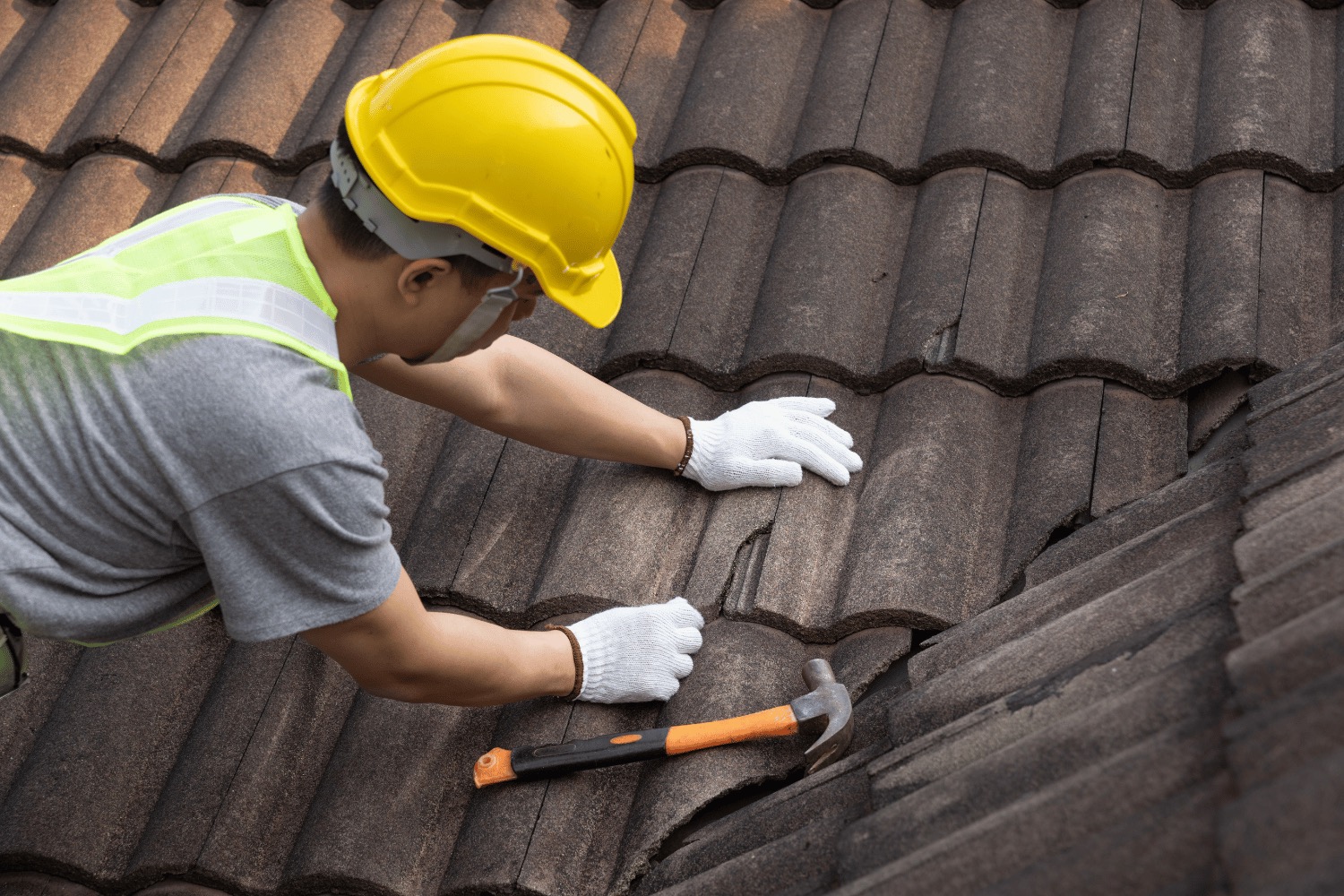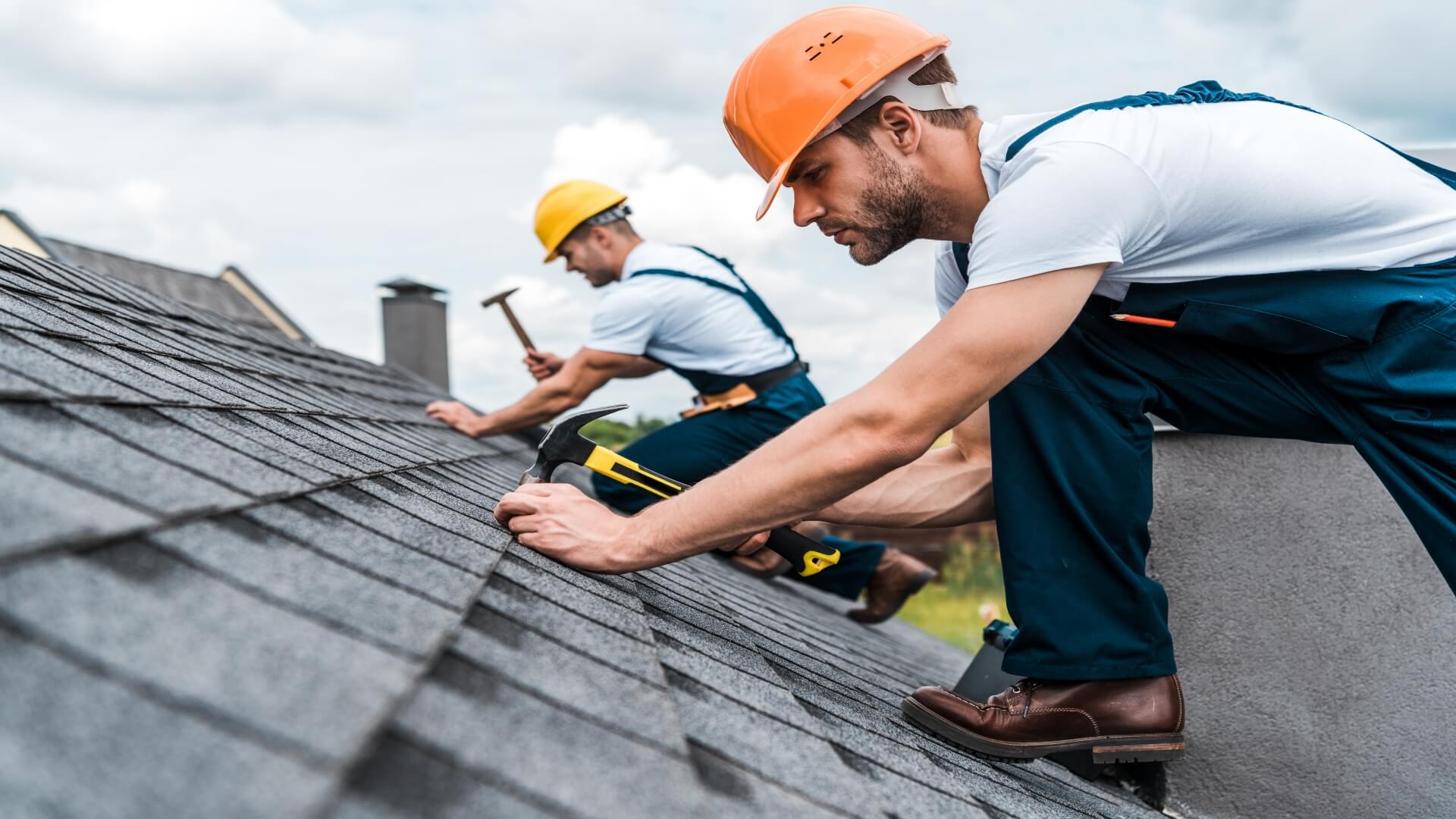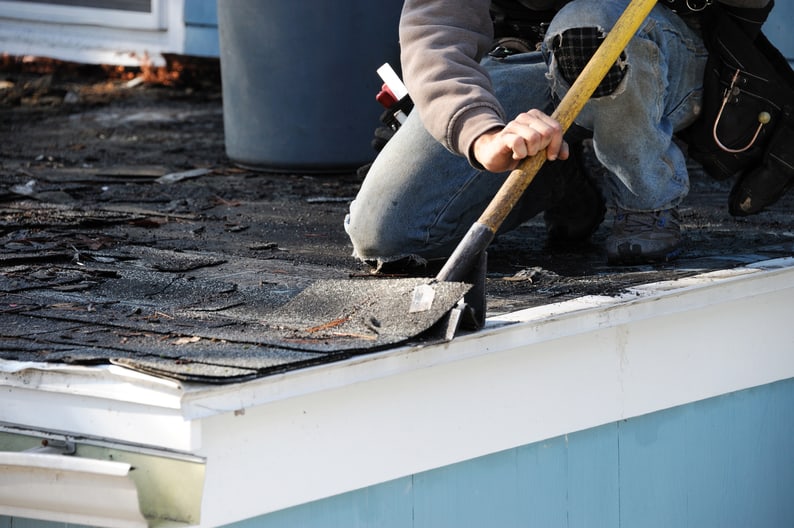Seasonal Roofing Fixing Checklist: Prepare Your Roof for each Weather
As a home owner, you understand the relevance of protecting your investment, and your roof plays a crucial function in that. Each period brings special obstacles that can influence its stability. By following a seasonal roofing system repair work checklist, you can stay ahead of potential problems. From winter season ice dams to summer season heat, each step is significant. Let's check out just how appropriate maintenance can guard your home and expand your roofing's lifespan.
Examining Your Roof for Winter Preparedness
As wintertime strategies, it's necessary to inspect your roof to verify it can stand up to rough weather. When snow and ice collect, Begin by inspecting for missing or harmed tiles; also a small problem can lead to significant leakages. Next off, check out the blinking around vents and chimneys-- this location is frequently vulnerable to water breach.
Don't fail to remember to try to find indications of drooping or irregular surfaces, as these could suggest structural issues. Additionally, validate your rain gutters are clear; blocked seamless gutters can cause ice dams that damage your roofing system.
 roof repair
roof repair
Spring Cleaning: Clearing Particles and Checking for Damages
As soon as winter's grasp launches, it's time to take on springtime cleansing on your roofing system by removing particles and looking for any kind of damage. Begin by checking your roof covering for fallen branches, leaves, and other particles that can catch dampness and create rot. A tidy roof promotes better drainage and stops mold development.
Following, get a tough ladder and thoroughly check tiles for fractures or missing items. Pay interest to locations around smokeshafts and vents, as these spots are prone to leakages. Don't fail to remember to analyze your seamless gutters, guaranteeing they're totally free from blockages that might bring about water merging.
While you're up there, seek indications of wear, like rust on steel blinking or loosened seals around skylights. Resolving them now can conserve you from costly repair work later if you spot any kind of issues. A little spring cleansing goes a lengthy means in keeping your roof covering's honesty.
Summertime Warm: Examining Your Roof Covering for Heat-Related Issues
As summertime heat intensifies, it's important to inspect your roof covering for heat-related problems. Inspect for any type of shingle damage, seek indicators of warmth buckling, and evaluate exactly how well your roof covering ventilates. Taking these steps currently can stop bigger troubles in the future.
Check for Shingle Damage
 roof repair
roof repair
Examine for Warm Buckling
Warmth fastening is an usual problem that can occur throughout the scorching summer months, and it's important to look for it on your roofing. As temperature levels skyrocket, roof products, especially asphalt roof shingles, can increase and agreement. This activity can lead to bending, developing undesirable lumps or cracks. Beginning by examining your roof covering visually; try to find any kind of unequal surfaces or lifted edges. Pay special focus to locations around vents and smokeshafts, where buckling is more most likely to happen. If you identify any indicators of warm fastening, it's crucial to address them immediately to avoid additional damage. If you're not sure about the level of the problem or exactly how to fix it properly., think about consulting a specialist.
Evaluate Roof Ventilation Effectiveness
After examining for warmth fastening, it's vital to examine your roof covering's ventilation performance. Correct air flow assists control temperature and wetness, preventing damage from excessive heat. Remember, maintaining good air flow not only prolongs your roofing system's life however likewise boosts your home's total power effectiveness, guaranteeing convenience during those warm summer months.
Rainy Period Readiness: Making Sure Correct Drain
As the wet season strategies, you require to guarantee your roofing system's water drainage system is prepared to deal with heavy rainstorms. Start by inspecting your downspouts and seamless gutters, and ensure they're free from particles. Don't neglect to inspect the blinking and seals to stop leakages and water damages.
Inspect Downspouts and rain gutters
Begin by inspecting for any visible debris, like leaves or twigs, that might block the circulation of water. Next, check out the downspouts for blockages or damages; an obstructed downspout can trigger water to overflow, potentially damaging your roofing system and structure. If you find any kind of concerns, resolve them promptly to protect against costly repair work.
Tidy Roof Covering Surface Debris
Use a roofing system rake or mop to gently eliminate debris, being careful not to harm the roof shingles. After cleaning, monitor your roofing system after heavy rains to identify any type of possible issues early. Keeping your roofing clear of debris is essential for stopping expensive repairs down the line.
Inspect Flashing and Seals
After removing your roofing system of particles, take a closer look at the blinking and seals around skylights, vents, and chimneys. If you discover any type of damages, it's vital to repair or change it promptly. Guaranteeing these components are in good problem will help preserve appropriate drain and shield your home from water damages throughout hefty rainfall.
Checking and Keeping Roofing Seals and Flashing
While it could appear very easy to neglect, inspecting and preserving roofing system seals and blinking is important for preventing leaks and water damage. Start by inspecting the seals around chimneys, skylights, and vents. Seek any type of splits, spaces, or signs of wear. It's ideal to reseal them with suitable roofing sealer to ensure a limited fit. if you find any kind of concerns.
Next, examine the flashing, which guides water away from crucial areas. Look for corrosion, loosened areas, or curved sides. Replace it or secure it correctly to maintain its stability if you find any broken flashing. Keep in mind, even a tiny defect can lead to significant troubles down the road.
Finally, don't forget to cleanse off any type of particles that could block the seals or flashing. Keeping these parts healthy will certainly aid secure your roofing against the elements and prolong its life expectancy.
Seamless Gutter Upkeep: Keeping Water Streaming Efficiently
Because your gutters play a crucial role in directing rain far from your home, routine upkeep is critical for avoiding water damages and structure problems. Beginning by removing out debris like leaves, branches, and dust. A clogged gutter can result in water overflow, which might harm your roofing and exterior siding. Utilize a durable ladder to get to the seamless gutters safely, and wear handwear covers to safeguard your hands.
Next, inspect for any type of signs of rust, openings, or sagging areas. If you see any damages, fixing or change the afflicted parts promptly. Validate downspouts are routing water a minimum of 6 feet away from your foundation. Think about including extensions if needed.
Ultimately, check that your gutters are effectively sloped, preferably a quarter inch for every single 10 feet. This incline warranties water streams smoothly towards the downspouts. Regular upkeep will certainly maintain your gutters working successfully and secure your home from costly fixings.
Arranging Professional Inspections for Comprehensive Treatment
On a regular basis scheduling expert evaluations is important for preserving your roof's integrity. This timing allows you to attend to any type of damage caused by winter months weather condition or summer tornados.
During evaluations, specialists will certainly evaluate tiles, blinking, and ventilation, guaranteeing everything's in leading shape. They'll likewise inspect for indicators of wear, leakages, or mold, which you might forget. Scheduling these evaluations not only prolongs your roofing's life expectancy yet likewise offers you peace of mind.
If you're unsure regarding the condition of your roofing system, don't wait to call Gainesville GA storm repair contractors an expert. Purchasing these exams currently can save you a great deal later on. Prioritize your roofing system's health, and you'll be well-prepared for whatever weather condition comes your way.
Frequently Asked Inquiries
Exactly how Typically Should I Examine My Roofing System Throughout the Year?
You should check your roofing at least twice a year, preferably in springtime and loss. After extreme climate events, check for damages too. Routine examinations help you capture problems early and conserve cash on repair services.
What Indications Suggest I Need a Roofing System Substitute Rather of Repair?
 roof repair
roof repair
Can I Do Roof Services Myself, or Should I Hire an Expert?
You can carry out minor roof repair work yourself if you're comfy with elevations and basic tools, but hiring a specialist warranties safety and correct job. Do not run the risk of damage; it might be worth the financial investment for peace of mind.
What Are the very best Materials for Roofing System Repairs in Various Environments?
For different climates, you'll want products like asphalt tiles for modest areas, steel roof covering for extremes, and clay ceramic tiles for hot areas. Always take into consideration neighborhood weather condition patterns to guarantee your roofing stands up to the elements effectively.
Exactly How Do Roof Covering Warranties Affect Seasonal Upkeep Responsibilities?
Roof warranties commonly specify upkeep duties, so you'll require to assess the terms. If you do not maintain your roofing as needed, you may void the warranty, leaving you in charge of costly repair work.
Seasonal Roofing Repair Service Checklist: Prepare Your Roof Covering for Every Weather
When winter's hold releases, it's time to tackle spring cleaning on your roofing by removing away particles and examining for any type of damages. Examine for any roof shingles damage, look for indicators of heat fastening, and review how well your roof covering aerates. If you find any problems, think about contacting an expert for repairs to maintain your roof covering in leading form and secure your home from prospective water damage.
While it might seem simple to forget, inspecting and preserving roofing seals and flashing is important for protecting against leakages and water damage.